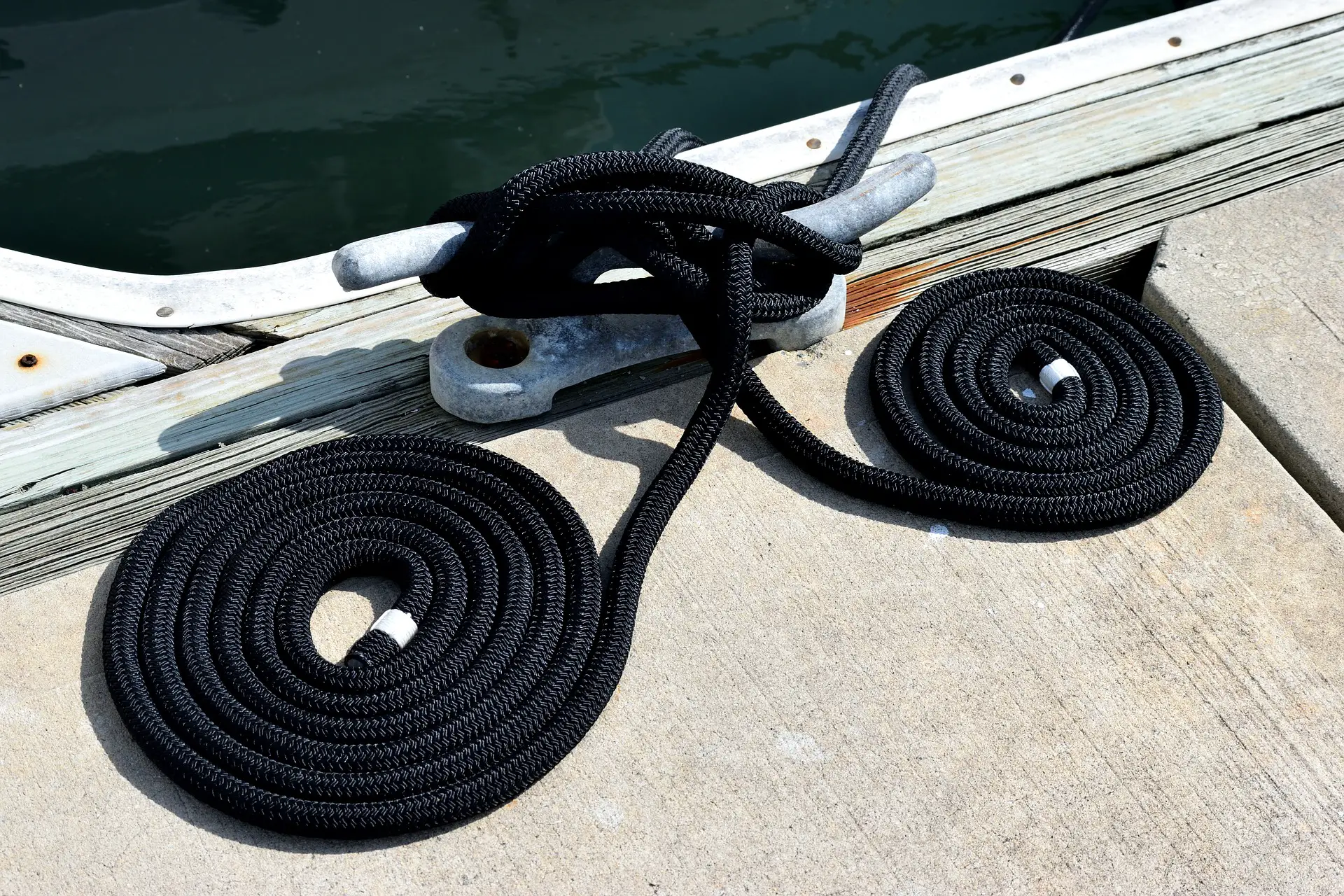The spring and breast line play a critical role when securing a vessel to the dock in Georgia, South Carolina, and North Carolina. Both spring and breast lines are used by vessels operating in fresh or saltwater. It is essential to understand the differences between each line in both the purpose and name when directing a passenger assisting with securing the boat. Do you know what is the difference between spring lines and breast lines? Here is what to know about the differences between a spring line and a breast line.
What Is The Purpose Of A Spring Line
When a boat is alongside the dock, the line extending forward and aft from the center is called a spring line.
The question is often asked what are spring lines used for? The purpose of these two lines is to prevent the vessel from sliding forward or back when tied port or starboard side to.
Boats shift forward or backward due to vessels passing near the dock, wave surges, high winds, and current. Currents are found in both fresh and salt bodies of water, including rivers and tidal zones where the water flows in or out depending on the tide.
How Many Spring Lines Are Required When Docking
Most boaters run a forward and aft spring line when it comes to utilizing spring lines. However, forward and aft spring lines are not required in all docking situations. Lastly, remember to keep at least two boat spring lines on the vessel.
What Is The Purpose Of A Breast Line
A breast line functions by holding the boat alongside the dock. The length of the breast line runs at a right angle off the bow and stern.
When winds are blowing from the dock to towards the side of the hull closest to the dock, the breast lines limit the distance in which it travels. Breast lines are essential to holding the boat firm to the structure when loading and offloading passengers.
How Many Breast Lines Are Required When Docking
Boat operators most frequently use between two and three breast lines when docking. The order of the lines includes the following, an aft breast line, midship breast line, and bow breast line.
The number of breast lines is highly dependent on the vessel’s length. Generally, boats do not utilize three breast lines but rather two. Three is overkill when docking small watercraft. Lastly, the lines are not required for loading or unloading passengers when other dock lines are in place.
A breast line boat provides a level of safety by firmly snugging the vessel along the dock. Without breastlines a gap remains between the boat and the dock in which passengers can fall.
Does The Spring Or Breast Line Aid When Maneuvering The Boat For Docking
Spring lines are instrumental in drawing the boat close to the dock when approaching to become secured.
When backing into a slip use spring line docking to your advantage. Connect the forward spring line from the center cleat of the bow to a dock cleat at or near that will be positioned near the bow when the boat is correctly positioned.
Once the line is secured to from the boat to the dock cleat, put the engine or engines in reverse and back down gently. The vessel will fall against the dock. While remaining in reverse, connect the remaining lines before putting the boat in neutral and shutting down.
When pulling straight into a slip, connect the aft leading spring line to the center cleat of the vessel and secure the other end to a dock cleat. Drive forward gently until the boat rests against the dock. Again, secure all engines before cutting power.
Utilizing a springline boat makes docking simple when facing strong currents or stiff winds. Use the leverage it creates to your advantage.
What Are Dock Lines Made From
When it comes to comparing the materials of spring lines vs breast lines the most popular material is nylon. Nylon incorporates three characteristics that make it ideal for securing vessels to the dock. The three beneficial characteristics of nylon dock lines include UV resistance, ability to stretch, and strength.
Stretch lessens the impact the boat endures when being rocked by surging seas or waves. UV resistance increases durability limiting the frequency in which the lines require replacing. Lastly, the nylon is strong; therefore, the line infrequently parts.
Nylon lines come in two forms, three-strand and braided. We recommended three-strand nylon line because it is capable of being spliced. Eyes are easily added by splicing.
Lastly, when compared to other materials, nylon dock lines are the lowest in cost. There is no sense in paying more money for sub-par material to secure your vessel dockside.
Now You Know The Difference Between A Spring Line Vs. Breast Line
It is critical to know what is the difference between spring lines and breast lines. When it comes to boating in Georgia, South Carolina, and North Carolina in salt or freshwater, store a minimum of six lines on board. Utilize spring lines to your advantage when approaching the dock in forward or reverse. While understanding the purpose of each line is essential, make sure to understand the process of securing a dock line to a cleat. Improper tying can result in the vessel drifting away free.





